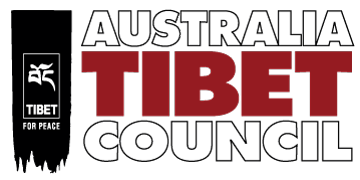Media Release
27 February 2023
Australians condemn the Mass Arrest of Tibetans protesting a dam on the Drichu River
On Saturday, 24 February 2024: more than 1,000 Tibetans, including monks, were arrested after protesting against a dam project that would destroy six monasteries and forcibly displace the residents of two villages.
Over ten days, multiple non-violent protests have taken place to object to the building of the Chinese hydropower dam on the Drichu river in Kham, Eastern Tibet.
“Tibetans are distraught that they are going to lose their homes” Says Dr Zoe Bedford, Executive Officer, Australia Tibet Council “the proposed dam would destroy six monasteries in the area, including one that contains centuries-old murals.”
“This mass arrest of more then 1,000 Tibetans for peaceful non-violent protest should be condemned by the international community” Says Dr Zoe Bedford. “There is no freedom for Tibetans in their own land, Tibetans should have a right to protest the destruction of their homes the destruction of culturally significant religious sites”.
[Video: Tibetan monks and residents arrested over China dam project – Radio Free Asia https://www.youtube.com/watch?v=NIMgL38mBHc]
The Drichu river is the Tibetan Name for what is called The Jinsha River (Chinese: 金沙江; pinyin: Jīnshājiāng; lit. ‘Gold Sand River’, Tibetan: Dri Chu, འབྲི་ཆུ, Yi: ꀉꉷꏁꒉ, romanized: Axhuo Shyxyy) or Lu river. The Drichu [CH: Jinsha} river is the upper stretches of the Yangtze River.
The Drichu river runs through more than ten Tibetan provinces, which in Chinese the provinces are called Qinghai, Sichuan, and Yunnan in western China.
Tibetans in Wonpotod (Tibetan: དབོན་པོ་སྟོད, Chinese: Wangbuding) township, Derge (Chinese: Dege) County in Kardze (Ganzi) Tibetan Autonomous Prefecture in Sichuan have been protesting since Feb. 14 against the planned construction of the 2,240-megawatt Kamtok (Gangtuo) hydropower station on the Drichu (Jinsha) River, located on the upper reaches of the Yangtze.
“Mass protests are rare in Tibet due to the occupying Chinese government’s extreme punishment for dissenters.” says Dr Zoe Bedford “Tibet is an occupied country, and one of the least free places in the world, this mass arrest has proven once again that the Chinese Government will ruthlessly punish Tibetans for peaceful non-violent protest”
Well-known Tibetan writer Tsering Woeser, who is based in Beijing, reported on the protests on social media. She wrote on Facebook “According to reports, Kamtok (Tibetan: སྐམ་ཐོག་, Chinese: Gangtuo) Hydropower Station, the “leading” cascade hydropower station built on the upper reaches of the Drichu (འབྲི་ཆུ་, Jinsha Jiang) River, will completely submerge at least six monasteries and two villages in Derge (Chinese: Dege) County, Kham. Among them, Wontoe (དབོན་སྟོད་, Chinese: Wangdui) and Yena (ཡེ་ན་, Chinese: Yinnan)
[Source Link: https://www.facebook.com/story.php?story_fbid=10161473496974802&id=618229801&mibextid=WC7FNe]
Monasteries belong to the Sakya community of Tibetan Buddhism, and they have a long history and survived the “Cultural Revolution.” Ancient architecture styles and murals from them have precious historical and artistic values and have attracted the attention of researchers from all walks of life in recent years. A group of murals from the 14th to 15th centuries are considered “one of the most important Tibetan Buddhist murals discovered locally so far, and have high reference value for the study of Tibetan painting art.”
However, now due to the construction of hydropower station, monasteries and villages are facing the fate of being submerged. Researchers also pointed out the critical situation, “The hydropower station will cause greater difficulties in the subsequent preservation and research of the murals in Wontoe Monastery. The research and protection of these murals in the monastery is urgent.”
“We in Australia condemn this mass arrest of over 1000 Tibetans including monks for non violent protest” Says Dr Zoe Bedford “ They should be immediately released and the international community should open its eyes about the extent of oppression in Tibet – where peaceful protest is met with violent repression”
Over 100 Tibetan monks and other Tibetans on Thursday, Feb. 22. Their current status is unknown.
Please contact the following people for more information:
Dr Zoe Bedford
Executive Officer, Australia Tibet Council
Email: zoe.bedford@atc.org.au Phone: 0408 262 576


